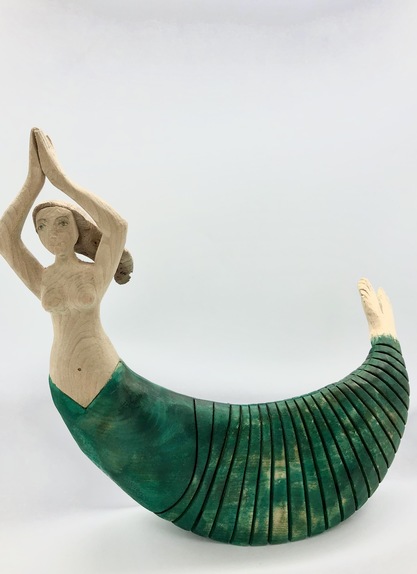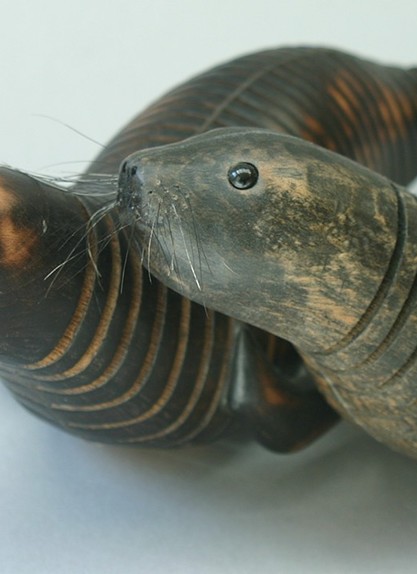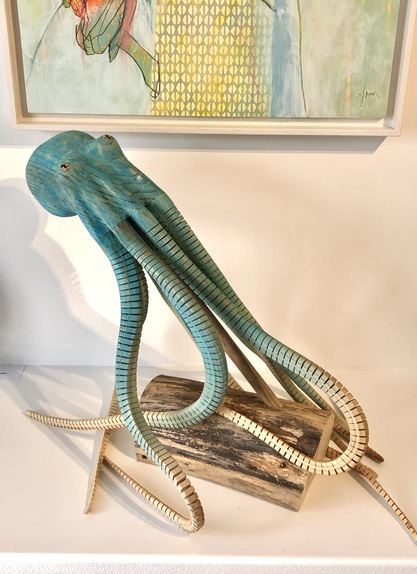About Jeff Soan
“I studied Art and Design at Goldsmith's College in the late 60's, taught for a few years, travelled for a while, married, started a family and a building business during the 70's. A chance encounter with a wobbly rat from Chile changed my life. I was so inspired by this articulated folk toy that I joined a course in toy making at the London College of Furniture, I set up my garden workshop in 1987 and have continued working there to this day, exploring and developing the possibilities of the technique of articulation.”
A batch of wobbly fish being snapped up by eager customers caught the eye of a passing TV producer and Jeff was invited to take part in a BBC programme called 'Handmade'. Sales really took off and he started developing many different creatures incorporating the technique.
Jeff joined the British Toymakers Guild in 1989. His distinctive talent was quickly recognised and he was awarded the Polka Prize in 1989, the coveted title "Toymaker of the Year" in 1995 and 2000 and the Guild cup in 1990, 1993, 1994, 1995 and 1999. He was also winner of the Longleat Cup in 2000.
The turning point in his career came with his successful application in 1991, into The Chelsea Craft Fair, organised by the Crafts Council.
Since then his work has been collected and taken to the four corners of the globe. As the Duke of Edinburgh remarked of Jeff, he is “…a craftsman at the top of his game.”
My work reflects equally a love of creatures, great and small, and a love of wood.
My earlier training as an artist and later as a toymaker has led to objects which can be seen as playful sculpture, or perhaps, sculptural toys, but I generally refer to it as Wobbly Wood.
I try to express the essential nature of the animals, birds, and fish I create, sometimes by simplification, sometimes by attention to detail and very often by the sinuous movement achieved with the technique of articulation. A large part of my work in recent years has been investigating the possibilities of this technique which is created by cutting the wood into narrow sections and securing it to canvas. I utilise the woods natural forms and features; its grain, colour and bark to suggest the creatures shape, markings, feathers and texture. I reduce waste as far as possible, for example the off-cut portion of a big fishes tail will form the breast of a bird. This awareness means that while cutting fish I can be thinking bird; one will reshape the other. Reclaimed wood is used extensively, from discarded furniture, driftwood, industrial pallets and friend’s and neighbour’s prunings and it’s this found wood that often informs and shapes the work. This constantly varying source of timber helps keep the work fresh and alive.



